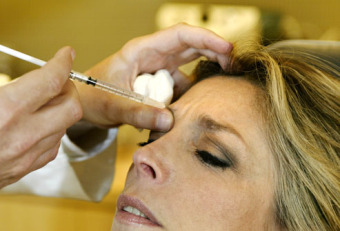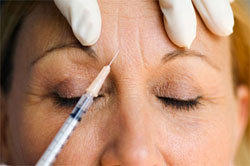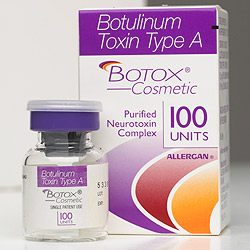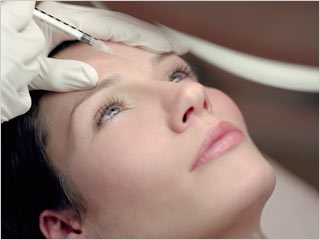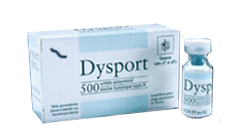 Sitting down with Dr. Stephen Weber of Lone Tree Facial Plastic & Cosmetic Surgery Center outside of Denver, Colorado.
Sitting down with Dr. Stephen Weber of Lone Tree Facial Plastic & Cosmetic Surgery Center outside of Denver, Colorado.
Physician: Stephen Weber MD, PhD
Location: Lone Tree, CO
Website: http://www.lonetreefacial.com
That's interesting: Dr. Weber has participated in the "Face to Face" program where local plastic surgeons donate their services to the victims of domestic violence and has participated in the annual humanitarian mission surgical trips providing free care to medically isolated, indigent patients.
Profile: I am a double board-certified Facial Plastic and Reconstructive Surgeon practicing at Lone Tree Facial Plastic & Cosmetic Surgery Center in the Denver metro area. My practice involves all aspects of facial cosmetic surgery including facelift, browlift, blepharoplasty, rhinoplasty, otoplasty, facial implants, facial resurfacing and scar revision. Our office also provides comprehensive treatments for facial aging including Botox and Dysport to reduce facial wrinkles, dermal fillers to minimize facial lines and folds as well as fractional laser (Fraxel and MiXto) resurfacing.
Can you tell us a little bit about you and how you got started in cosmetic medicine?
I became a Facial Plastic & Reconstructive Surgeon by a very circuitous route. In medical school, I planned to become an Infectious Disease specialist and even obtained a Ph.D. in Immunology and Microbiology in pursuit of that goal. However, my first rotation after successfully defending my thesis was in head and neck surgery. I knew that first day that I wanted to become an Otolaryngologist (Head & Neck Surgeon, ENT). During my residency training in Otolaryngology and Head & Neck Surgery I realized that my goals of performing a diversity of procedures in a technically demanding sub-specialty made Facial Plastic Surgery a very well suited specialty. I trained as Dr. Shan Baker’s fellow in Facial Plastic Surgery at the University of Michigan and then entered practice.
Can you tell us more about your clinic and the services available?
My practice is a single specialty clinic. We have two plastic surgeons here at the practice, myself and Dr. Rick Schaler who is my partner and practice owner. We have eight other staff including one nurse, five estheticians, one front desk staff member and a billing manager. We offer the full range of facial reconstructive and cosmetic surgery. Our office has a fully functional operating room in which we perform all of our cosmetic procedures under IV sedation. On the medical spa side, we offer all of the available injectable treatments including Botox, Dysport, Xeomin, Restylane, Perlane, Juvederm, Radiesse and Sculptra. We perform laser services including Fraxel and MiXto (fractional CO2) resurfacing, vascular laser and laser hair removal treatments. We also perform a full complement of facial peels and facial treatments. Our patient population comes from the surrounding suburbs of Lone Tree, Highlands Ranch, Littleton, Parker as well as Denver proper.
How are you dealing with staff in your clinic?
Fortunately, we have not had the need to fire staff. The reason for this is that we’re very careful with the hiring process. The communication between members of our office is very clear. When we set out to hire a new member of the office we have a clear, articulated goal regarding our needs and the type of person we want to hire. Everybody in the office has a chance to veto a potential new member of the office staff. Each member of the office also has the opportunity to veto that potential candidate. We tend to hire from a pool of people already familiar to the office or from strong referrals from friends of the practice. We have avoided print advertising of open positions of late as this always leads to a huge response with relatively low yield of the type of candidate that we need.
For the front desk staff, compensation is hourly. For procedure or treatment oriented members of the office, including physicians, compensation is heavily weighted toward production. This is the most fair compensation method and encourages productivity. The formula is simple, clearly articulated and fair. Employees are paid a percentage of net collections. An employee can review their production at the end of each month, if requested. I review my own production at the end of every pay period and encourage the rest of our staff to do the same.
What laser technologies are you using now? How do you decide on new purchases?
We perform laser treatments including Fraxel and MiXto (fractional CO2) resurfacing, vascular laser and laser hair removal treatment. In terms of new purchases, laser companies really need to show us a substantial improvement in results before we will purchase new technology. We are marketed to by phone, mail, email and at conferences. I am interested in new radiofrequency technologies but I think the jury is still out and we’re holding out on making that purchase.
How do you market your clinic?
In terms of social media, we market on Facebook , Twitter, as well as LinkedIn. We’re trying to determine whether Pinterest can be leveraged with pre- and post-op photos and other images. We use social media to communicate with current and prospective patients with informational posts and product samples/ give-aways. Our email list of current patients is our most valuable marketing tool. Providing current patients with updates that they can forward to friends is invaluable. We also put on open houses and seminars that allow us to provide education, meet new patients and learn more about our current clients.
In the pay-per-click arena, we use Google AdWords with a relatively conservative budget. That has drawn a lot of traffic to our website and helped generate surgical cases. We have been testing the waters of direct mail and print advertising. Direct mail has had moderate result. Print advertising has been disappointing. We do not currently take part in Groupon, Living Social or any other daily deal sites. The main reason for this is cost and questionable ability to develop lasting relationships with users of these services.
What are the most coveted treatments/services in your practice? Have you tried removing some of your services?
The sun and dry air in Denver are the reason why people flock to this area. However, they wreak havoc on facial skin. As a result the demand for lasers and peels here is tremendous. On a volume basis, Fraxel skin resurfacing and Botox are the most common services in our office. However, the fixed cost associated with these services is significant. From a revenue perspective, surgery provides the greatest revenue and greatest profit for the practice. About 75% of our cases are elective in nature. We have not dropped any procedures recently. When I joined the practice, I introduced Sculptra facial injections and Radiesse hand rejuvenation and we’ve seen high demand for these treatments.
What have you learned about practicing cosmetic medicine?
I’ve developed a thicker skin and learned not to take things personally. In the past, when a patient booked surgery with a competitor I assumed that I had erred in some way or not provided excellent photos of patient results or …. I’m noticing today more and more patients that will meet multiple surgeons and come back to book surgery with me. When I’ve asked why, the answers that patients provide are incredibly vague. It really is a gut feeling that people have that you are or are not the surgeon that will provide what they’re looking for. All we can do is provide as much information and education, quality photos of surgery results, a top notch facility and a warm, caring environment to convince patients that we’re the right team for them.
Any last thoughts on advice for your physician colleagues in the cosmetic industry?
I would urge physicians, especially in the plastic surgery realm, to compete by providing exceptional service. With Groupon and other daily deal sites, there is increasing pressure to compete on cost. Some of these deals will temporarily drive patients into the practice. However, few are likely to be loyal patients when the practice down the road runs an even cheaper deal. The daily deal trend has provided consumers with cheap (not necessarily quality) services. However, this has come at the expense of sustainability for practices that jumped in without doing enough research. The bottom line is that daily deals will lead to a spike in volume composed of largely price-oriented patients. Further, the deal seeking crowd is unlikely to see the value in your services. Continuing to drive down prices when our costs are fixed is not only unsustainable but diverts your attention from providing services, such as surgery, that are the profit engine for the practice. When you offer services at cost, you CANNOT "make it up on volume."
This interview is part of a series of interviews of physicians running medical spas, laser clinics and cosmetic surgery centers. If you'd like to be interviewed, just contact us.


